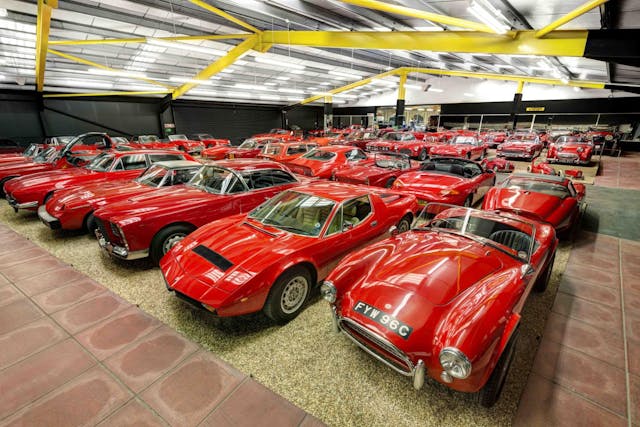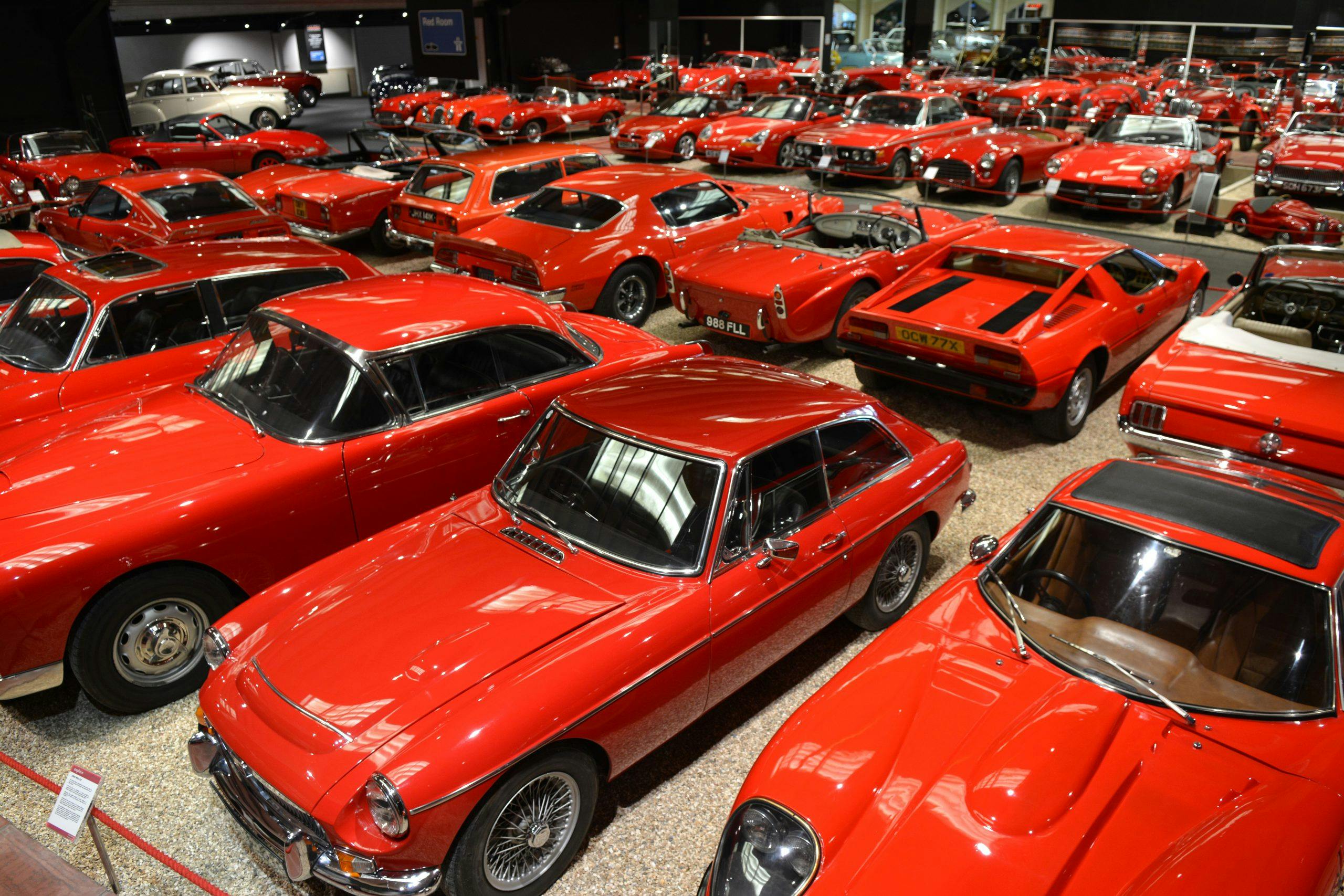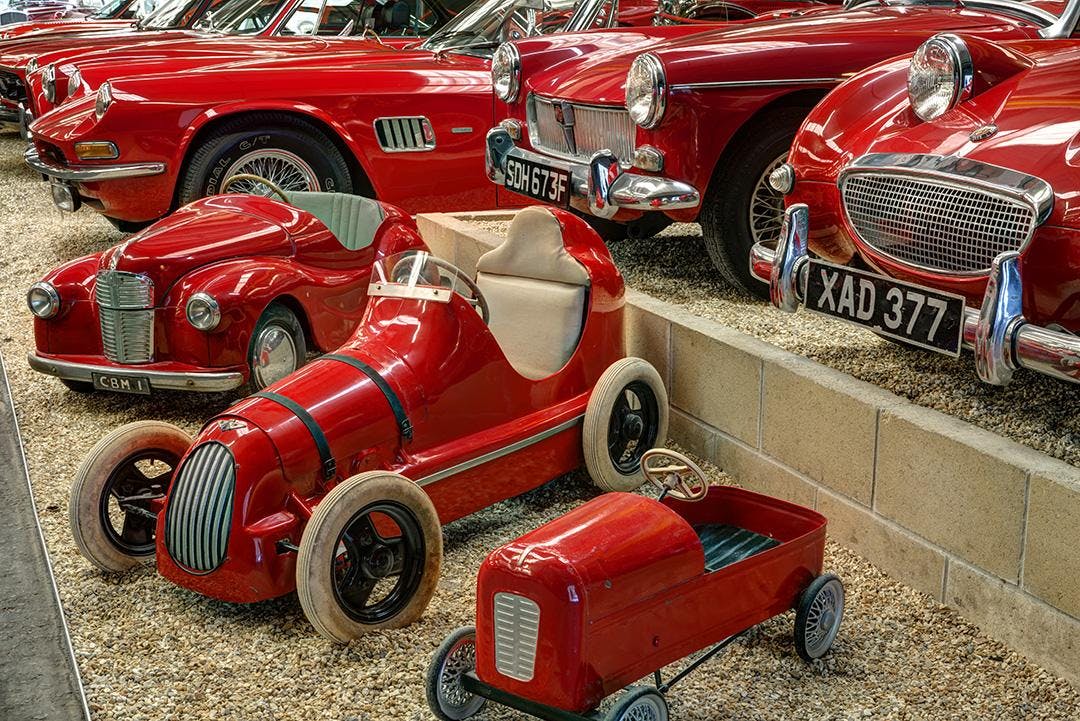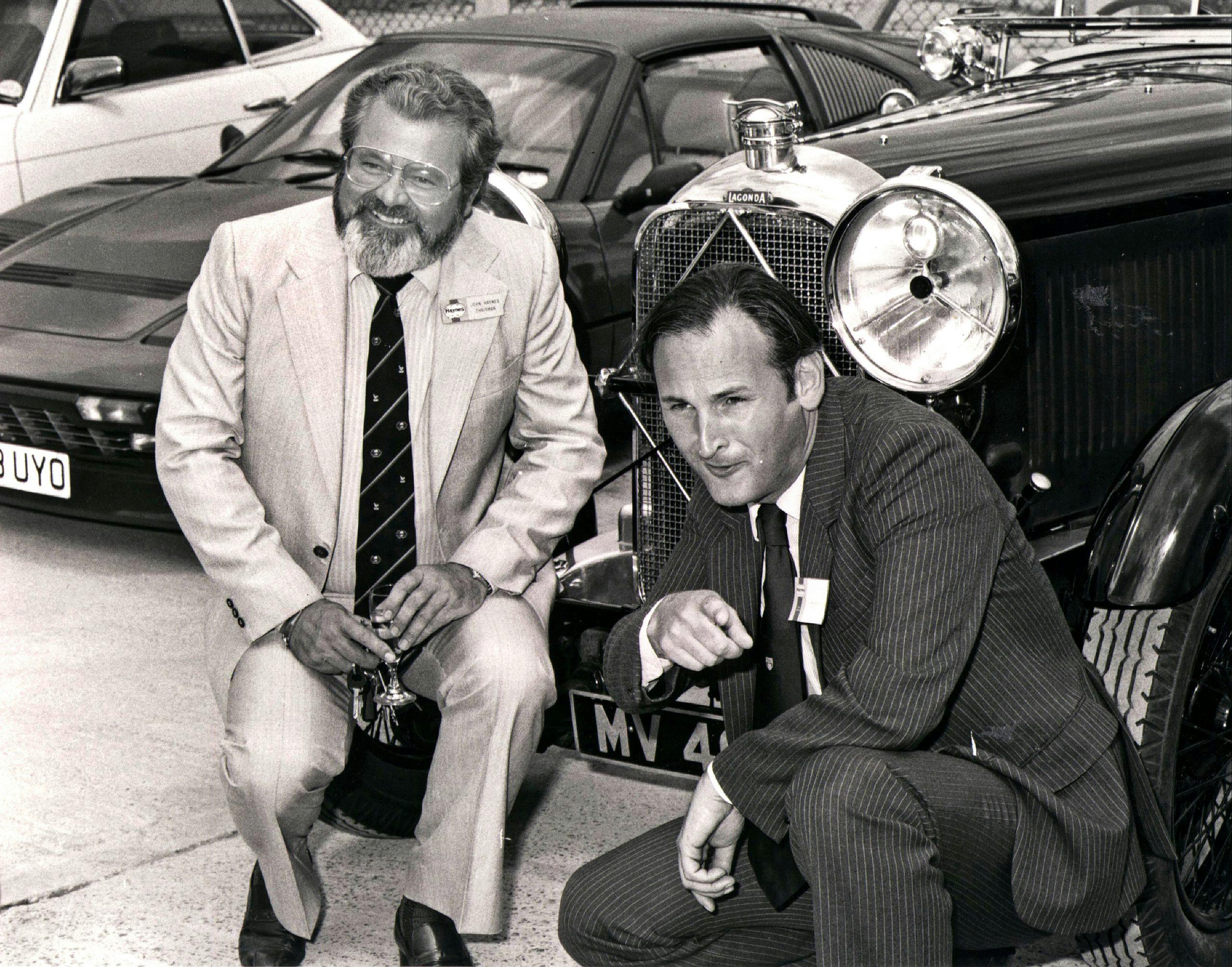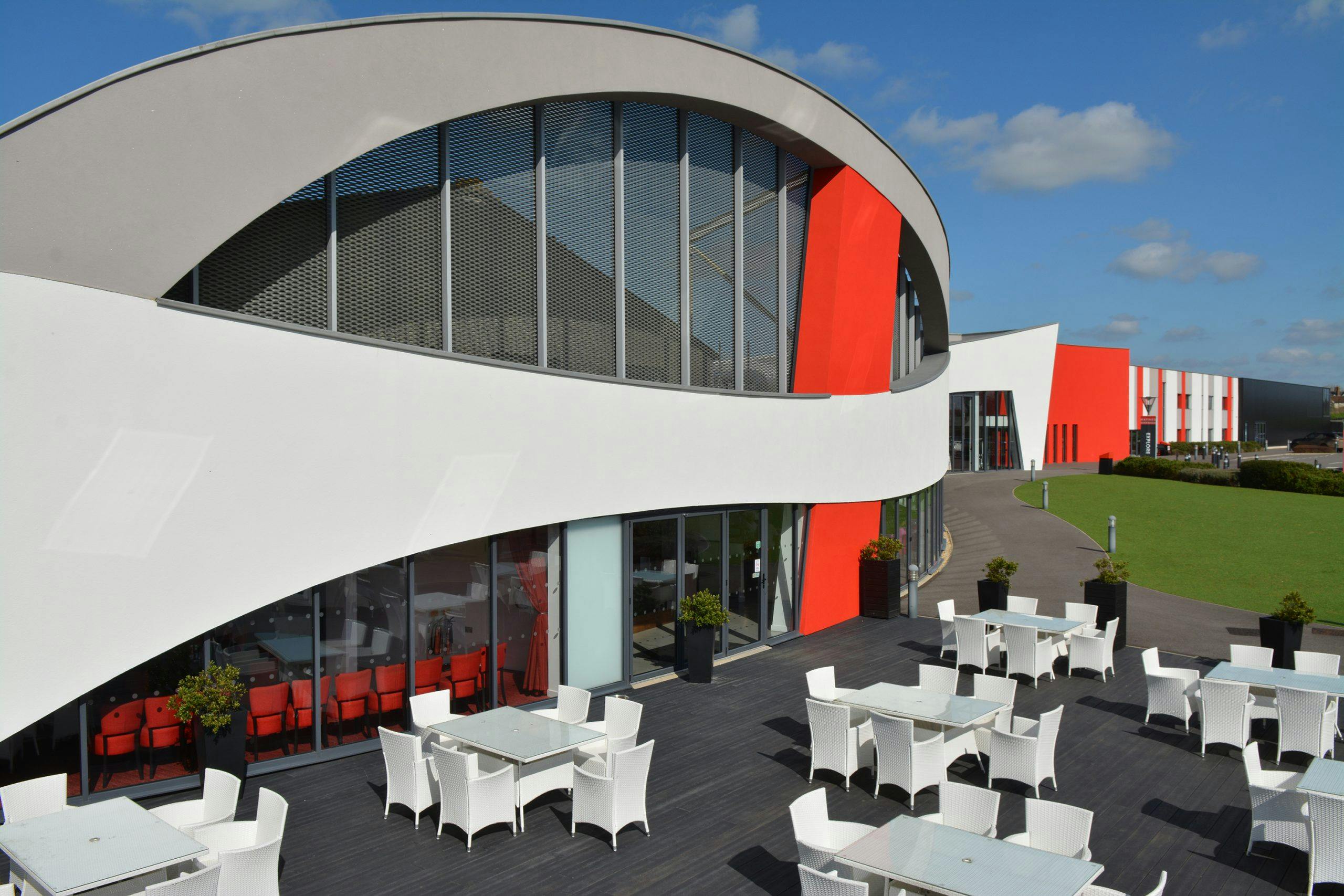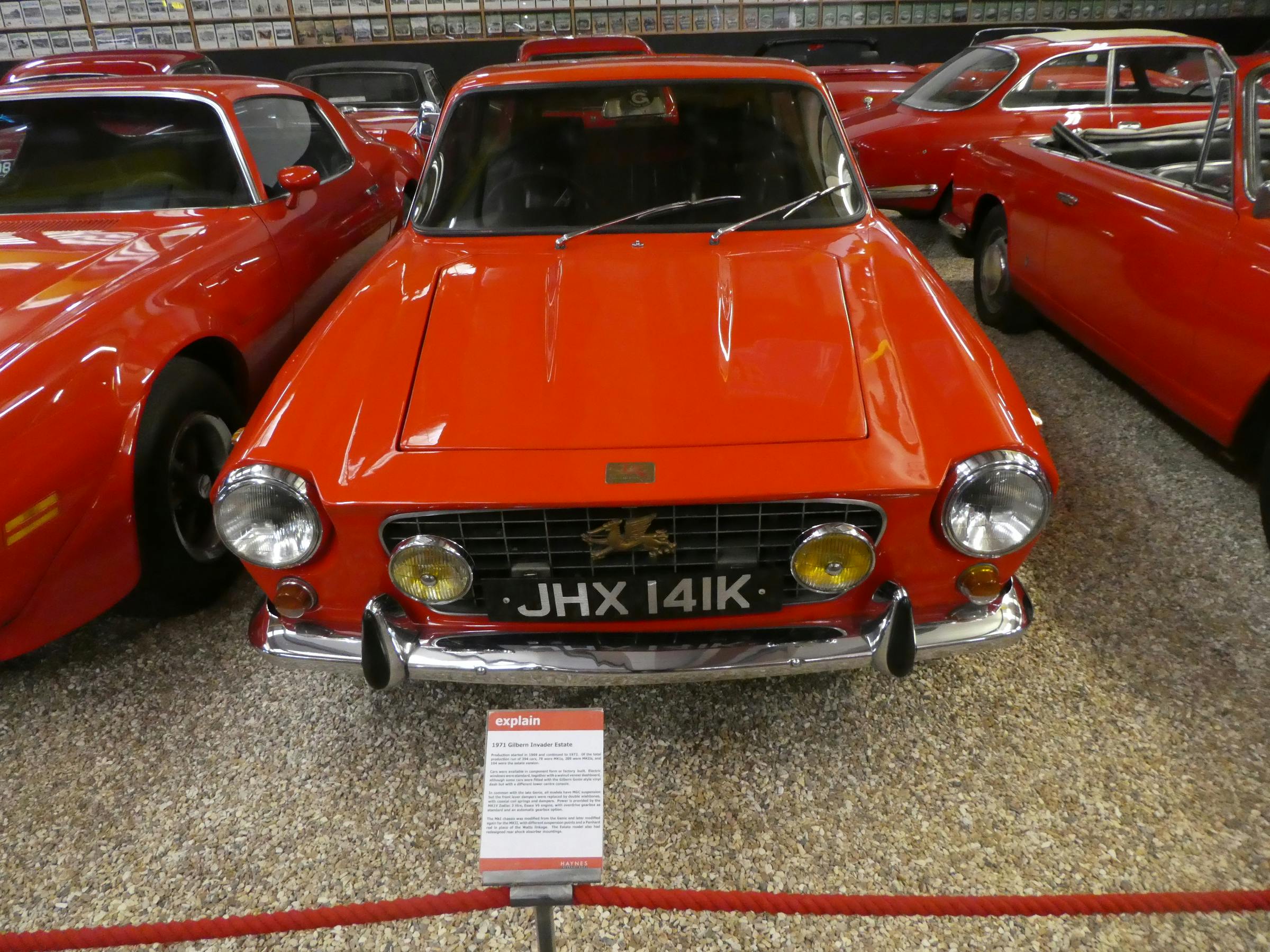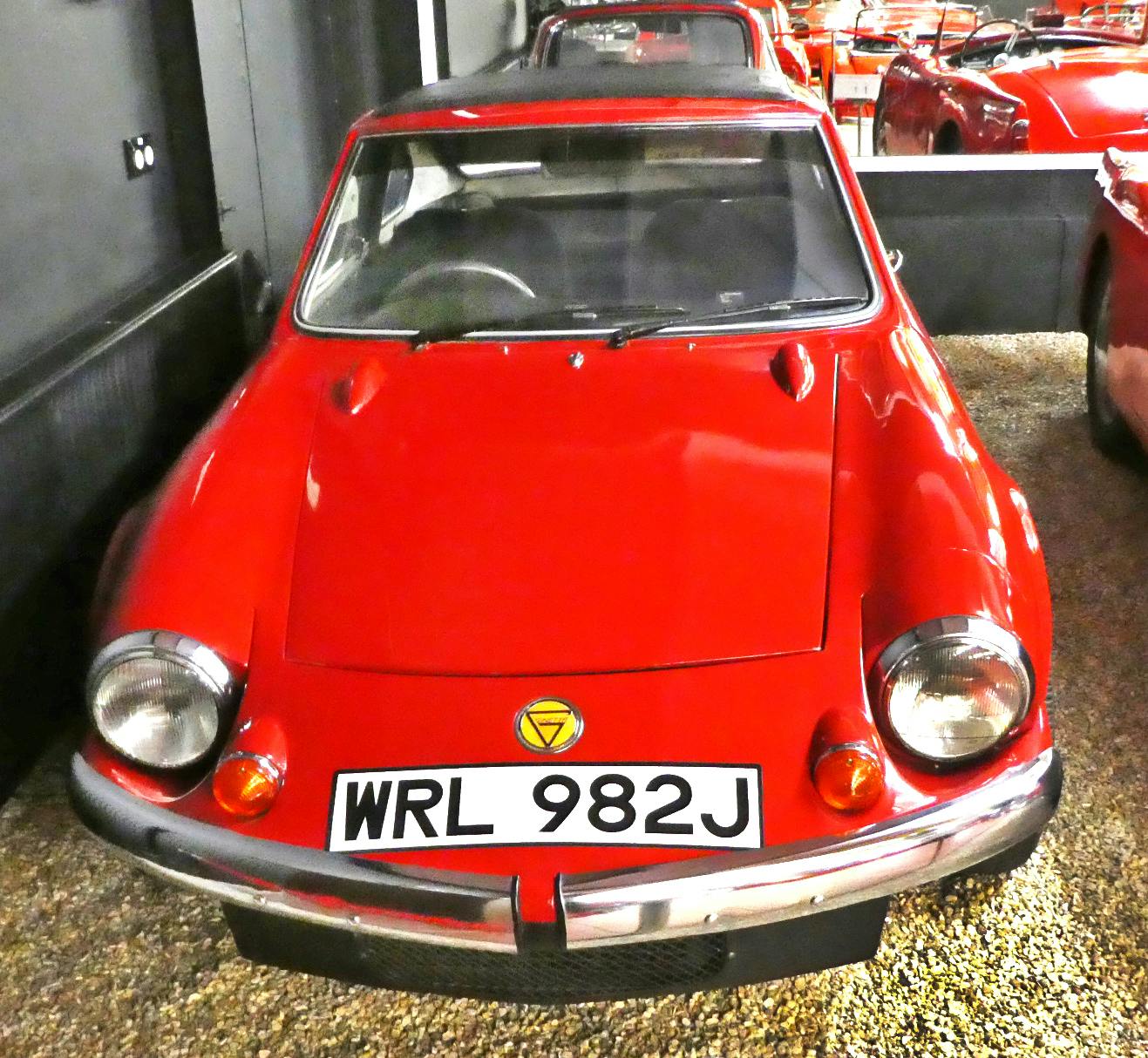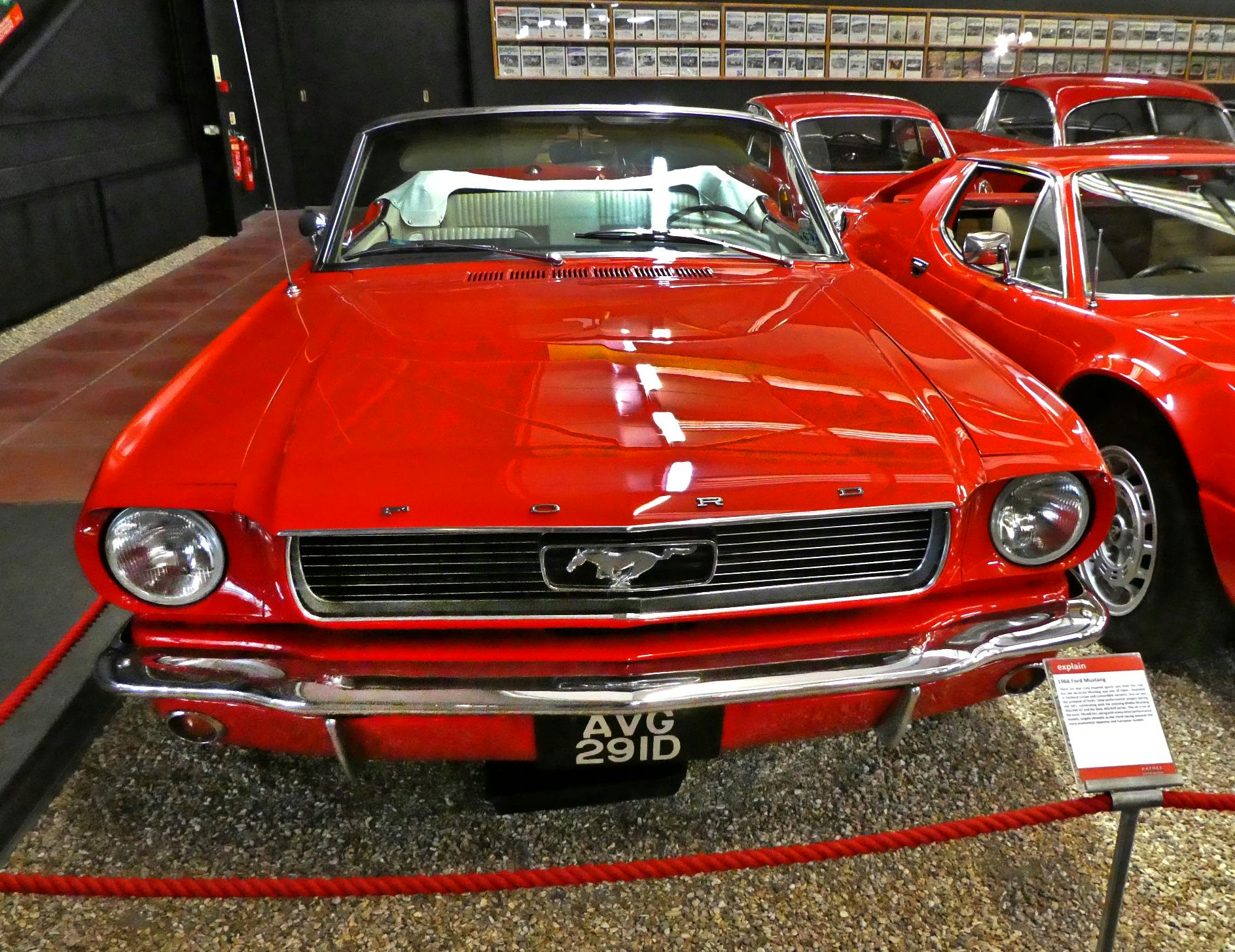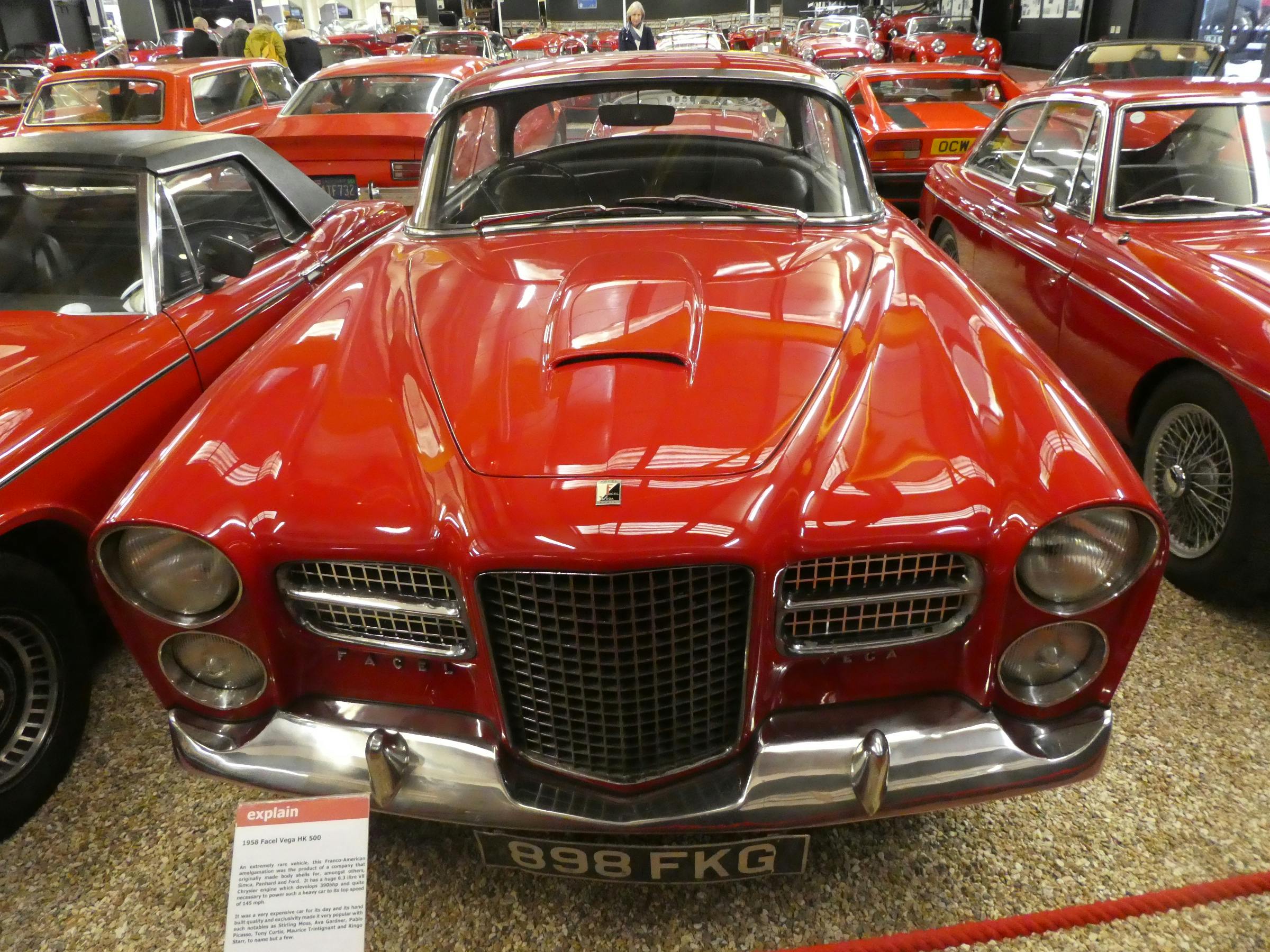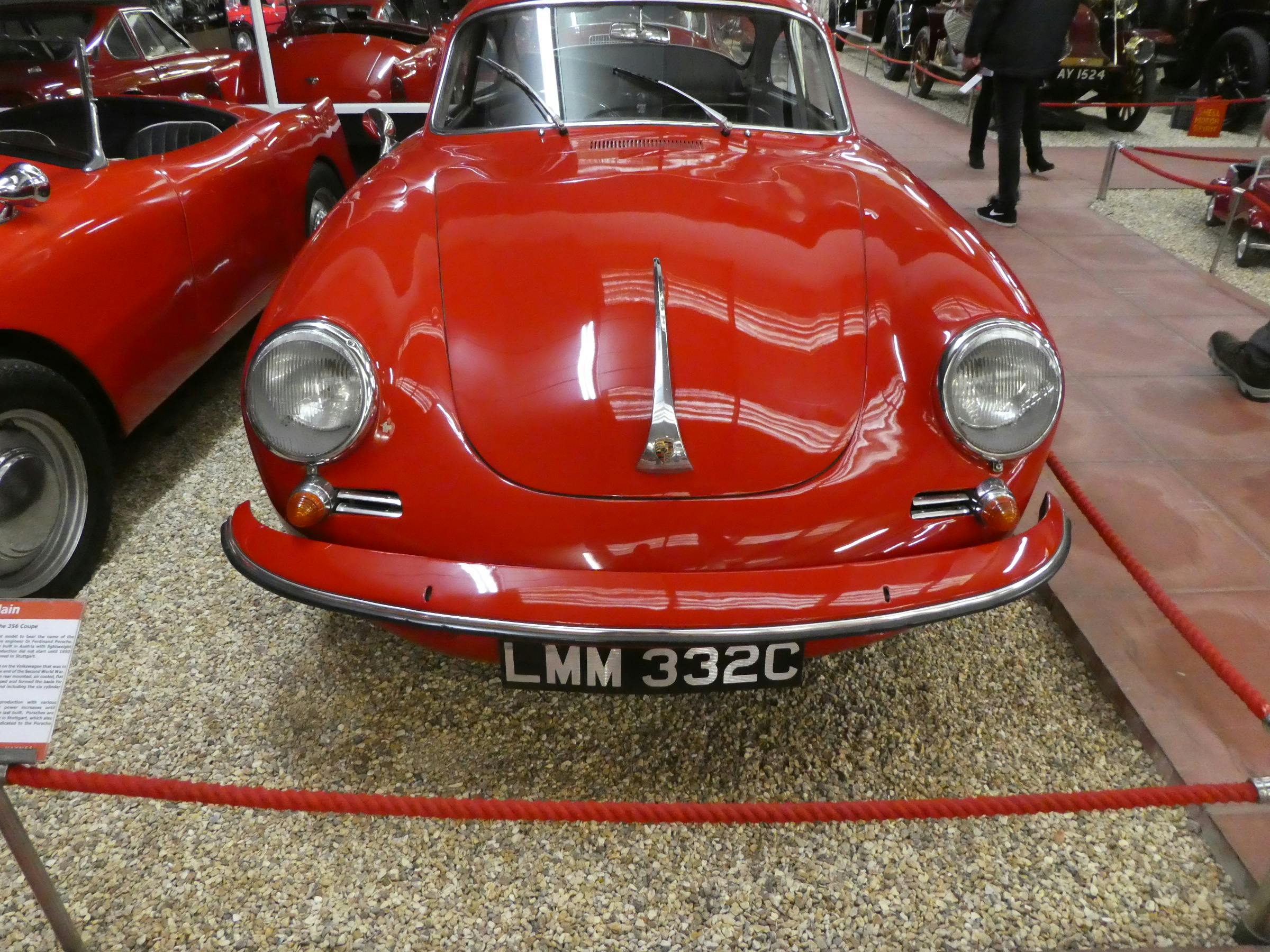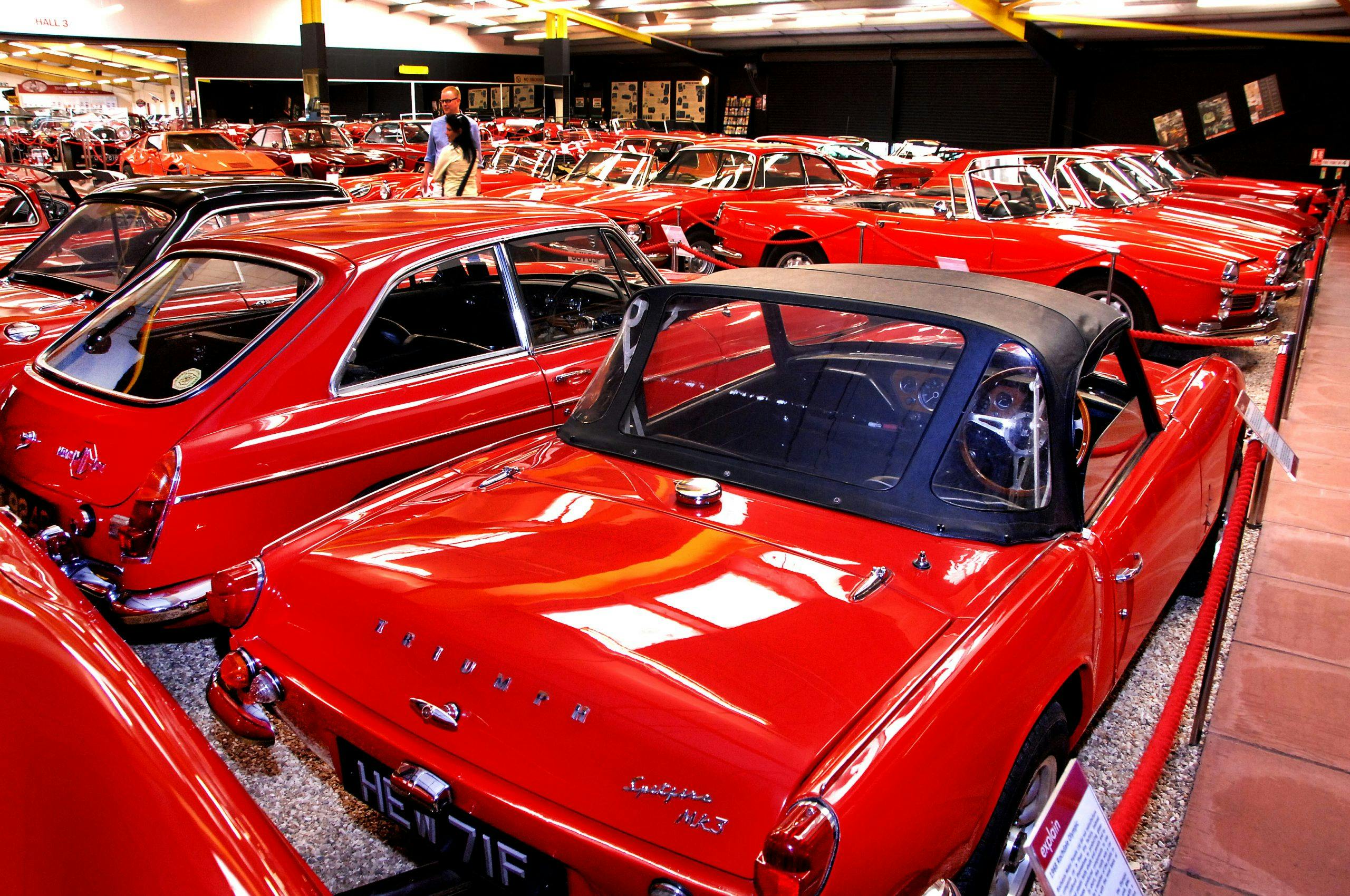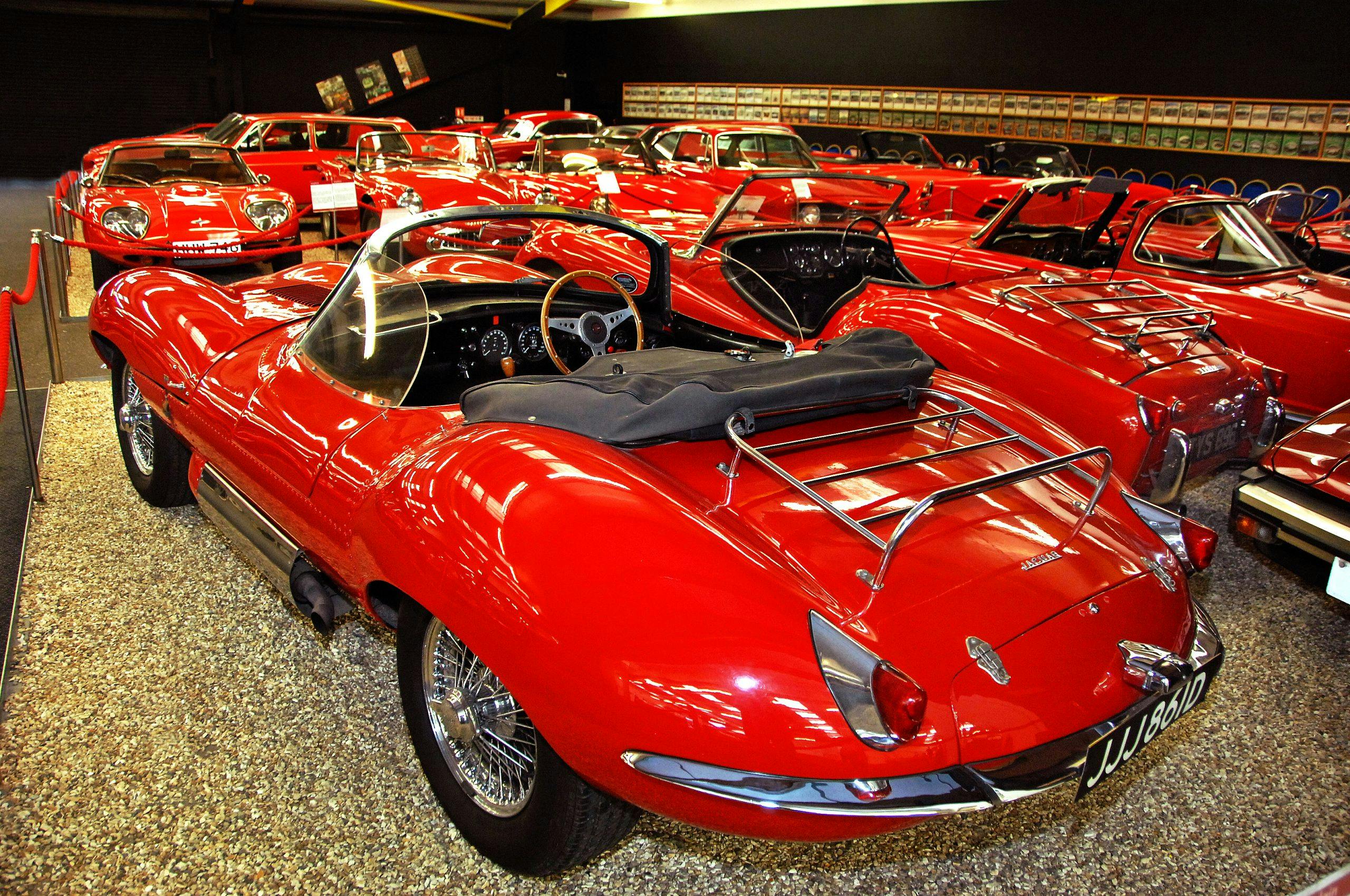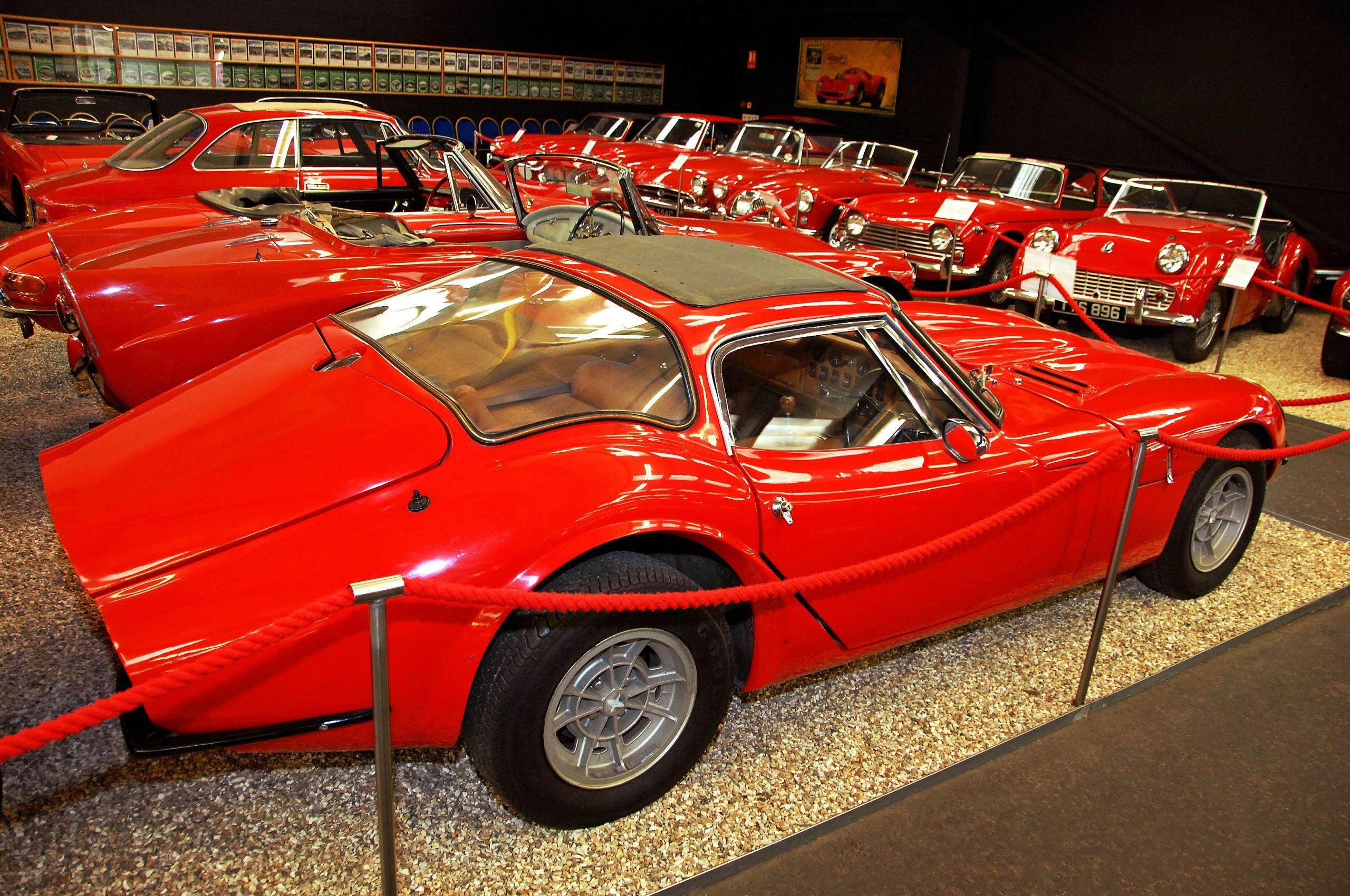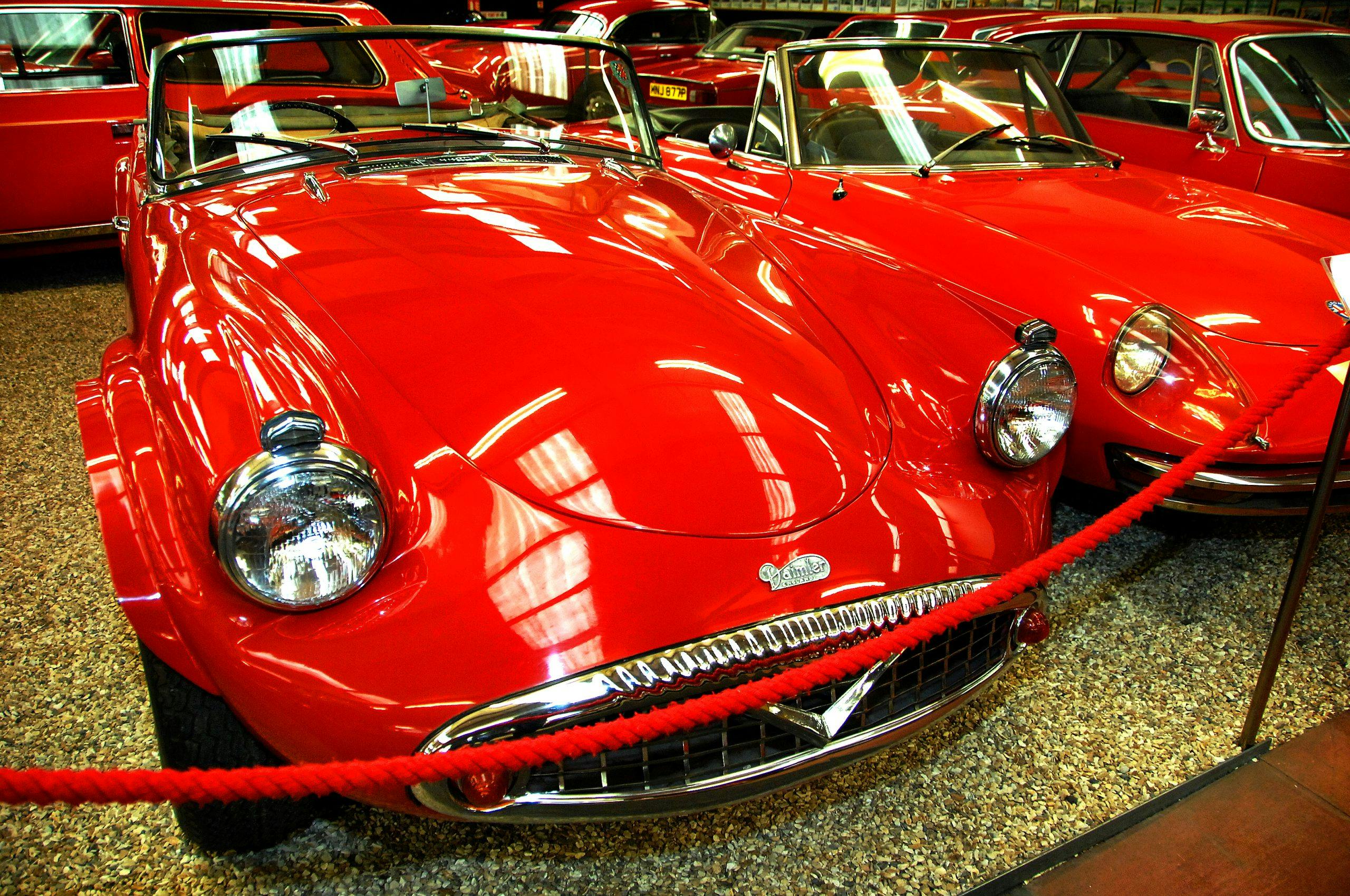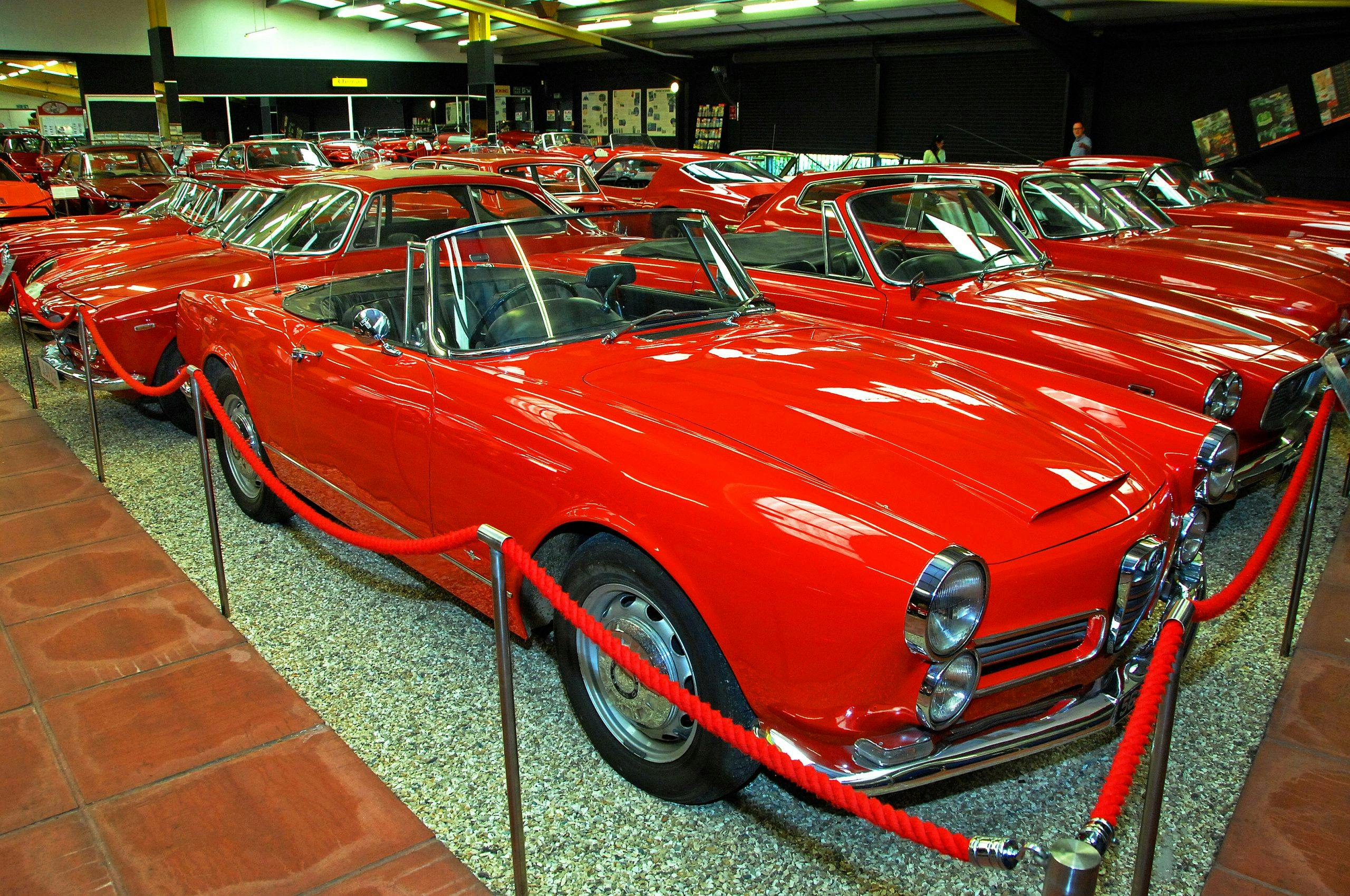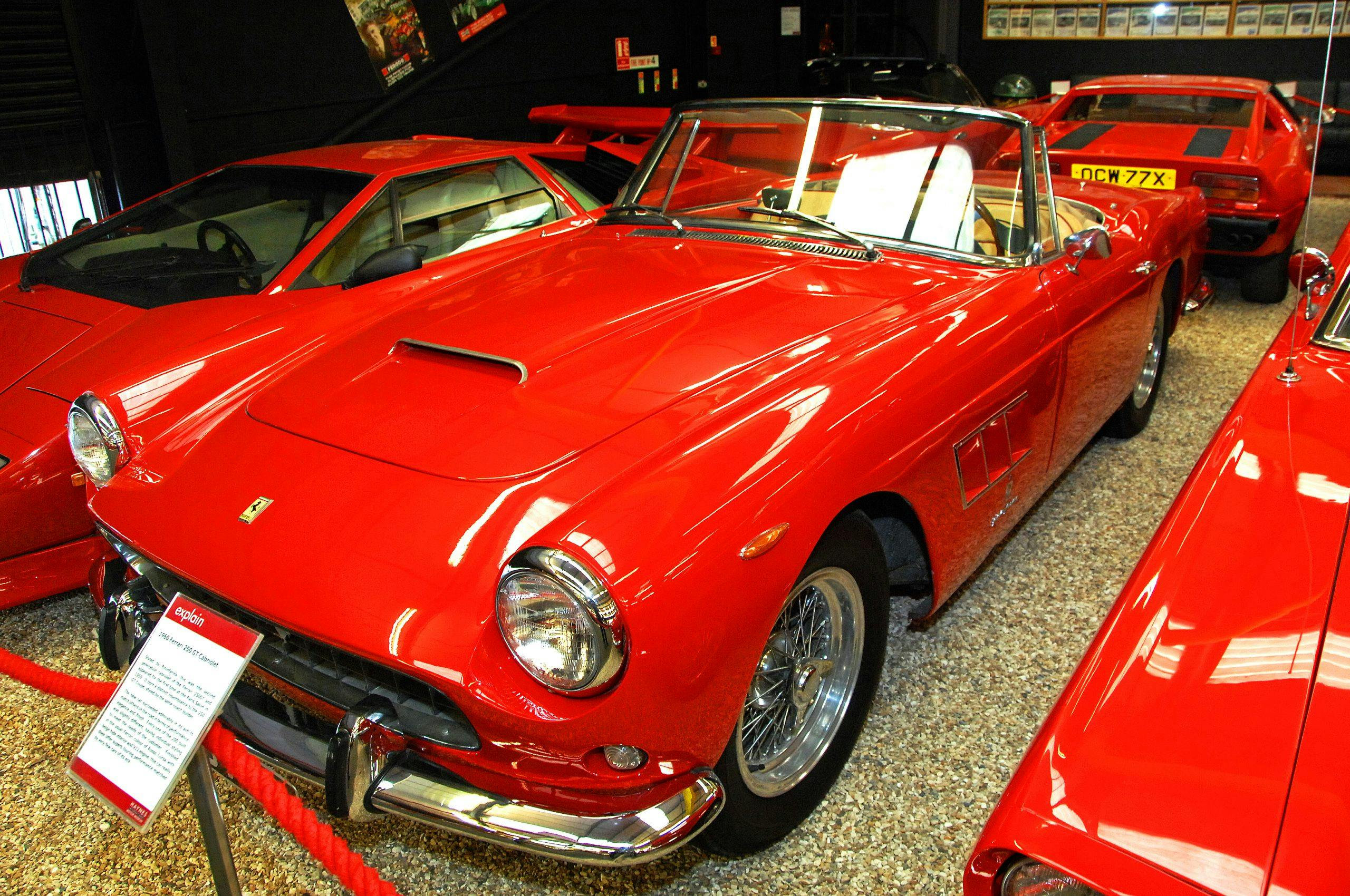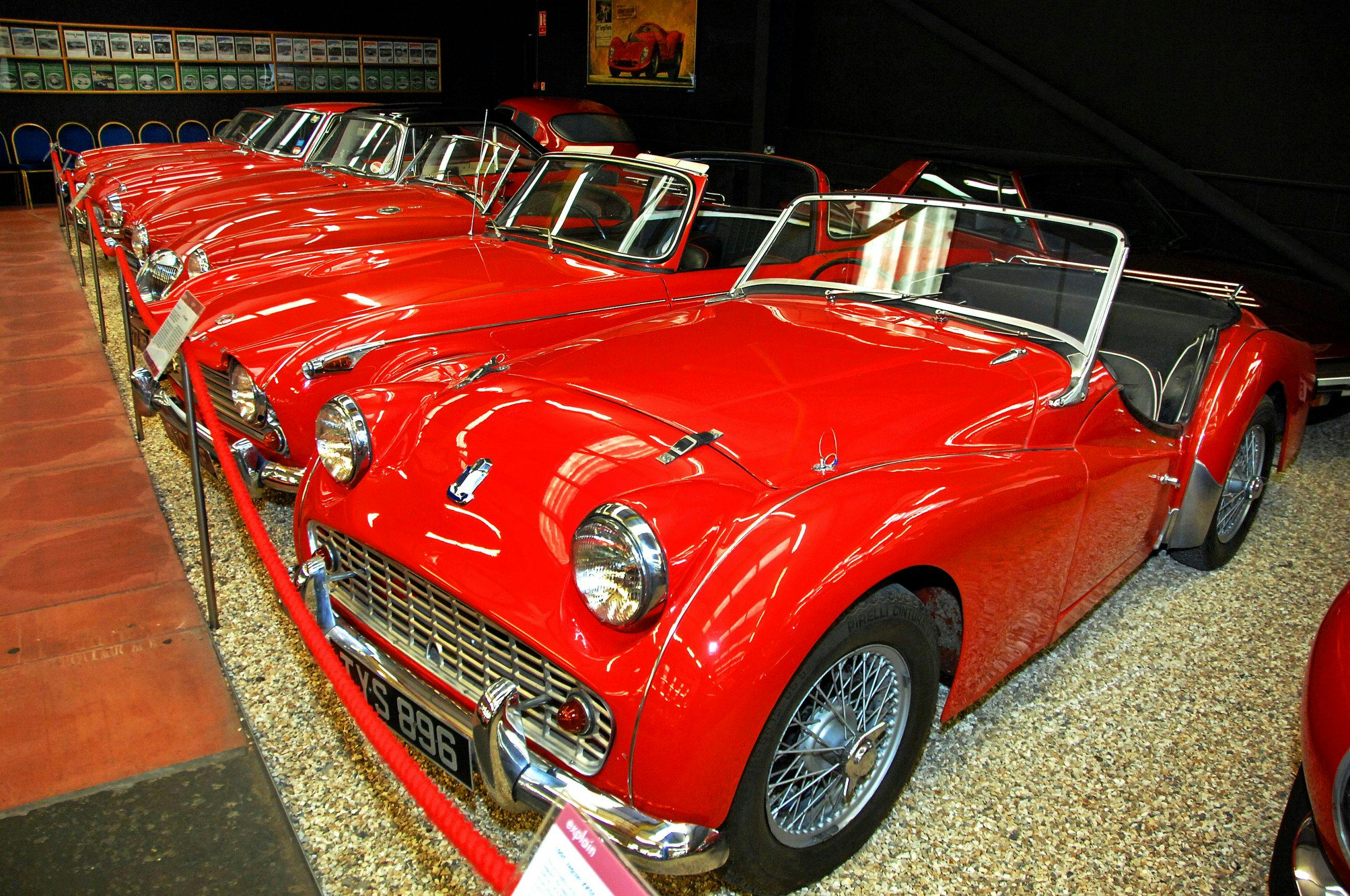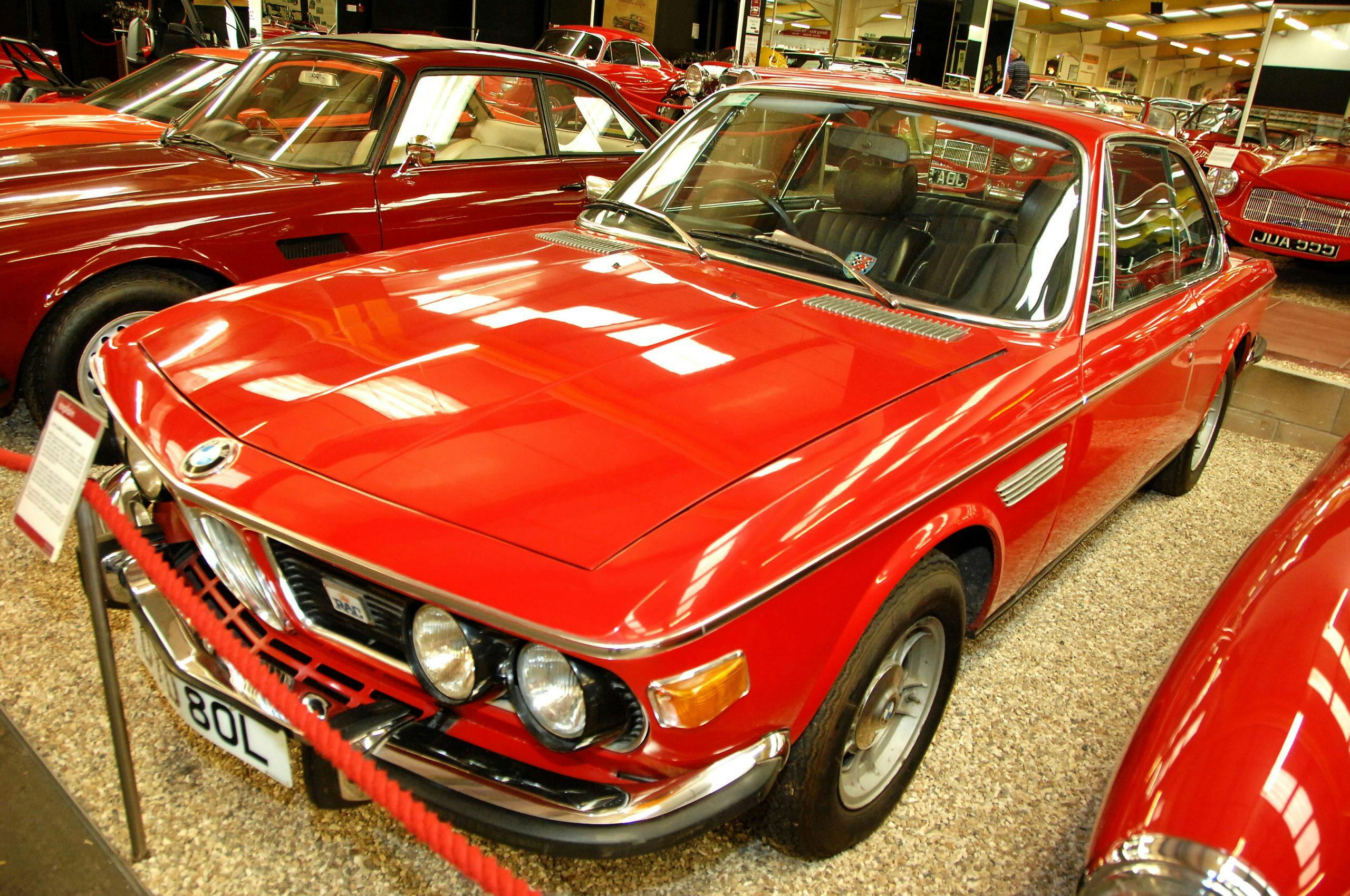The Red Room is the crimson jewel of the Haynes International Motor Museum
You probably know ex-RAF officer John Haynes (1938-2019) as the man behind the popular repair workshop motor manuals. He once said that his book publishing was very good to him, and that Haynes International Motor Museum was his way of giving something back. (The museum is an educational trust.) Opened in 1985 under the direction of Richard Noble, who is known for breaking the land speed record in 1983 at a velocity of 633.468 mph, the Haynes International Motor Museum is located the village of Sparkford in the heart of rural Somerset, U.K. It is a living and working environment with over 400 superb cars, bikes, and motoring memorabilia from around the world in collection displayed in 19 individual exhibitions. Staff call it a “Museum in Motion.”
Of these exhibitions, the most famous is “The Red Room,” displaying more than 40 red sports cars from around the world. Most vehicles are owned by the museum but it accepts donations and long-term loans for the collections.

As you enter the sea of red steel you are bathed in a crimson hue of royalty. “The Red Room exhibition began when museum founder John Haynes realized the growing collection of sports cars in the museum were primarily in red, a color he felt expressed the passion, dynamics and soul of a sporting vehicle,” says museum curator Chris Marsh. “What began as an instinctive selection process became a key gallery within the museum.”
The Red Room is stocked with cars in varying shades of striking and passionate red, which the museum says helps you focus on the shape of each car instead of just the paint. The whole concept of the room is a kind of cleaver to your vision, with the red so overwhelming that it disguises the cars in such a way that you are forced to walk each row to identify the different models.
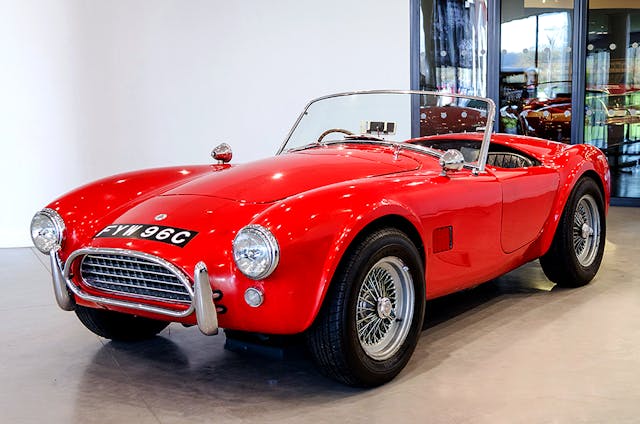
Among the collection of cars in The Red Room when I visited the museum a number of years ago is the all-aluminum 1965 AC Shelby Cobra (above). It’s still on display in the new building that was completed in 2014 with increased exhibition space, a new frontage and conference facilities, a new restaurant, improved test track, and a children’s playground. This car was John Haynes’ favorite sports car and is now presented proudly in the foyer of the museum.
Some of the other cars on display and leading the red pack is the striking ’95 Jaguar XKSS replica built by L&R Roadsters. The car was based on a “67 Jaguar 3.8 type saloon and incorporates real pieces of Jaguar engineering. The XKSS was a road going version of the ‘50s racer the D-type; you can find the ex-Steve McQueen XKSS on display at the Petersen Automotive Museum in Los Angeles, California.
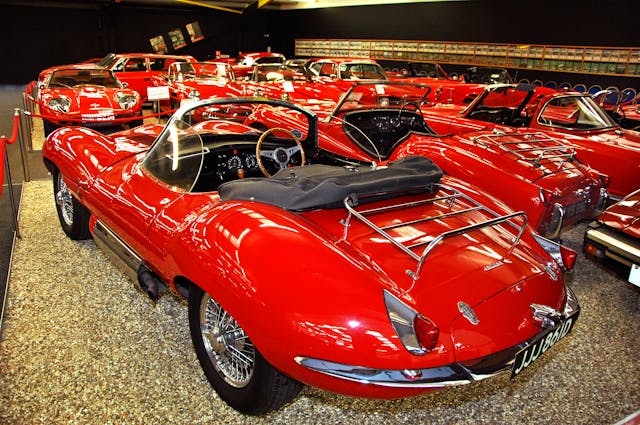
Want more red? A 1963 Alfa Romeo 2600 Spider and the 1966 Lancia Flavia are on display in The Red Room, too. The Alfa Spider was basically an upgrade for the old 2.0-liter cars, and only 2255 were produced. A big high-revving six-cylinder twin-cam of cast aluminum block and head power the car. The Lancias were renamed after Roman roads throughout Italy, built by Carrozzeria Vignale, and had rear-facing red lights on the door which illuminated as they were opened.
The first Haynes owner’s workshop manual came together in 1965, when Haynes helped an RAF friend rebuild an Austin Healey “Frogeye” Sprite. Haynes completely stripped and reassembled it, photographing the complete procedure and creating the first Haynes manual, which was published to great success in 1966. The example below in The Red Room is a 1959 Sprite; in concept it is based on the Austin A35/Morris Minor parts and semi-monocoque chassis-less body. In U.S. it was known as the “Bugeye.”

A 1956 AC Ace Bristol is a British open-two-seater sports car was produced according to the design of John Tojeiro. It had a lightweight tubular chassis with fully independent suspension, with a number of different engines that was fitted during the production. This beautiful example houses a 2.2-liter Bristol engine and is regularly maintained to keep it fresh. The Ace was a key foundational point for Carroll Shelby’s famous Cobra.
A very rare red racer is the 1951 Turner 196, established by Welsh engineer Jack Turner. About 670 cars were produced and were also available in kit form, with the prototype housing a rear mounted Hillman IMP engine. This Turner is one of the earliest, rarest, and looked like the Ferrari 166 Barchetta—with a much cheaper cost of entry.
The color of passion is fitting for the 1969 Marcos in the collection, powered by a 3.0-liter Volvo straight-six for the American market in order to pass exhaust emissions regulations. Jem Marsh and Frank Costin founded Marcos in Bedfordshire, England in 1959. While Costin worked on the De Havilland Mosquito fighter-bombers he got the idea to build a chassis out of marine plywood with an outer shell of glass-reinforced plastic.
In early 1960s, the Daimler SP250 “Dart”—built on a Triumph TR3 chassis and powered by an Edward Turner 2.5 liter V-8 engine and three-speed auto—went into service for London’s Metropolitan Police. The Dart was meant to keep up with cafe racer motorcycles and “encourage courtesy on the roads,” but the program ended allegedly because the policemen were have way too much fun.

Some of the more recently added red performance cars in the new building now include a 1968 Rochdale Olympic coupé of mainly glass-fiber body produced between 1959 and 1973, a 1971 Gilbern Invader Estate powered by a Zodiac 3.0-liter V-6 engine with an overdrive gearbox as standard and an automatic gearbox option, and a 1970 Ginetta G15 which was produced from 1968 to 1974 and initially available only in kit form. (Later, some factory built examples were available.) The powertrain was a rear-mounted 875-cc Coventry Climax 14 linked to a four-speed manual with independent coil springs at the front and rear.
Finally, for a taste of American flavor, the 1966 Ford Mustang (200 hp) is a timeless symbol of the 1960s.
Aside from the Red Room, the Hall of Motorsports is of particular interest; the Hall was opened a number of years ago by the late Sir Stirling Moss, a true British icon said that it “represents motoring through the ages from all over the world, concentrating not just on the great and glorious but also the popular and simple,” according to the museum catalogue.
The Haynes International Motor Museum remains closed to the public until further notice to prevent the spread of COVID-19. The Museum now plans to possibly reopen in mid-October 2020 although the Workshop and Restoration Centre remains open to customers.
